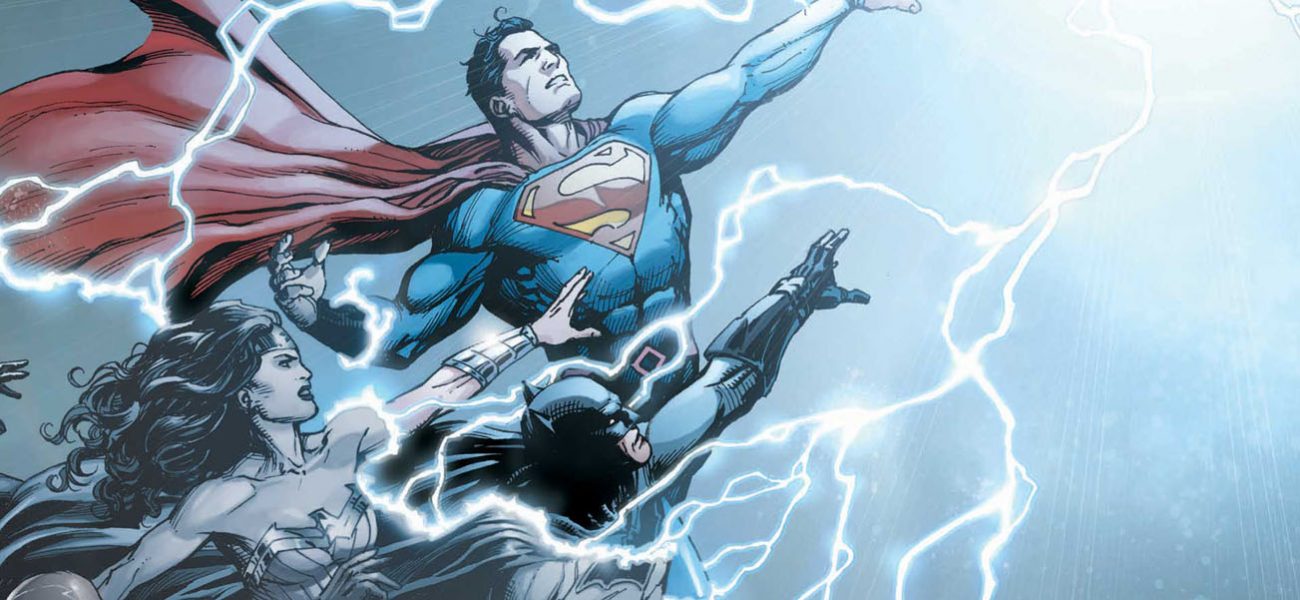NEW YORK (CNS) — Superheroes have gotten too serious. That’s the takeaway from “DC Universe: Rebirth,” the famed publisher’s new series of comics through which it aims to retool its cosmos.
The company’s creative director, Geoff Johns, recently said that he wants “more hope and optimism” in comics. Works like “Watchmen,” “The Dark Knight Returns” and the rainy, dour film “Batman v Superman: Dawn of Justice” have introduced crusaders who are psychologically wounded, violent, even sociopathic.
Graphic novels and movies like these have presented important and engaging stories. But they have also brought darkness to a genre that has traditionally boasted a large quotient of blue skies and joy. Those are ingredients that DC’s rival Marvel has managed to retain in its films.
[hotblock]
After all, we are talking about an art form centered on characters who can do things the rest of us can only dream about.
Johns’ first move to bring back the fun has been to pen the text for an 80-page introductory issue that features illustrations by a variety of artists. “Rebirth #1” has vivid action sequences, but they are never excessively violent or graphic. There’s also no nudity or sexual content.
The byzantine plot, on the other hand, is much too complicated for young children. That’s largely because Johns has to revisit, and untangle, a lot of recent comic book history to set his universe right.
DC has already attempted a reboot of its universe in recent years, mostly through the use of alternate time lines. The character called the Flash is usually the trigger for these offshoot alternative worlds, which makes him a good choice to serve as the narrator for “Rebirth.”
The scarlet speedster can travel so fast he’s able to enter the time stream, which can place him in a chronology quite different from that of DC’s established canon. In one parallel existence, for example, Batman’s alter ego is Thomas Wayne, not Bruce. More recently, DC has tried something even more radical, wiping out its entire 80-year history via a revamp called “The New 52.”
The multiple series launched under that heading haven’t gone over very well, and now DC appears to be scrambling to reverse the damage. Their endless rejiggering has resulted in manifold plots and subplots as well as a glut of characters. Just keeping track of all these variables can be a source of overwhelming confusion.
Johns’ solution is controversial, and assessing it inevitably involves spoilers. Though most of these plot points have already been dissected online, readers who want to come to the big reveal of “Rebirth” entirely fresh should let their eyes travel no further.
It turns of that Doctor Manhattan, the most powerful character in the 1986-87 graphic novel “Watchmen,” has created his own universe — the one DC characters have been living in since “The New 52” debuted in 2011.
[hotblock2]
Originally known as Dr. Jonathan Osterman, this glowing blue being sports a Muscle Beach physique as well as godlike powers he acquired accidentally in the 1950s after a nuclear experiment he was participating in went wrong. (Osterman’s post-transformation name is an explicit reference to the Manhattan Project, the U.S. research program that developed the atomic bomb during World War II.)
As Doctor Manhattan’s abilities have increased, his compassion for humanity has waned. Though the resulting attitude is more one of indifference than of genuine malevolence, his coldness is almost worse than outright antipathy. His unsought capabilities have rendered him virtually unable to feel. Thus, though he expresses pity for ordinary people, he regards them as so many termites.
Ever since “Watchmen” first appeared 30 years ago, DC has treated it as a separate, self-contained entity, a narrative entirely distinct from the rest of its superhero line. So Doctor Manhattan’s appearance amid the company’s regular roster of characters has, predictably, raised some eyebrows.
Some have speculated that this brand-blending turn of events grows out of Johns’ mixed feelings toward “Watchmen.” While acknowledging its brilliance, he may view the book as the starting point for the grim, disturbed tone that has dominated DC’s recent output — and that “Rebirth” is intended to correct.
Time is a central element in the story of “Rebirth.” And only it will tell if the back-to-the-future conceit underlying this series will successfully return us to a world of superheroes who smile rather than brood.
The comics contain mature themes. The Catholic News Service classification is A-II — adults and adolescents. The DC Comics rating is T — teen.
***
Judge reviews comic books and video games for Catholic News Service.
PREVIOUS: How St. John Paul II used spiritual power to bring down Soviet Union
NEXT: Movie review: Warcraft




Share this story